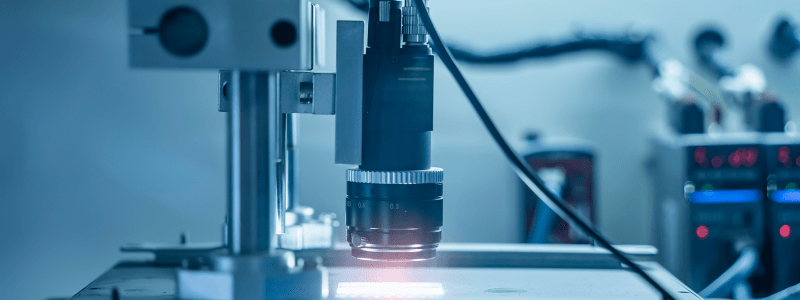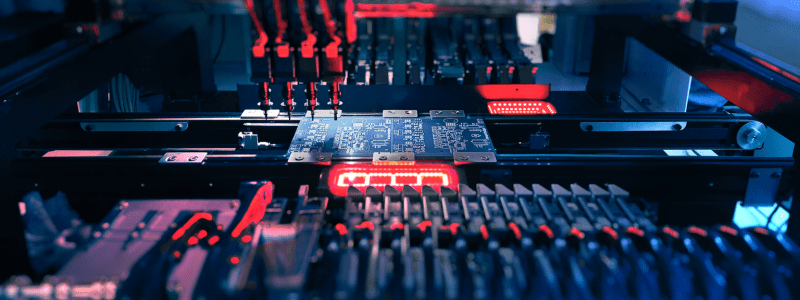
Machine vision inspection has become a game-changer in many industries, offering unprecedented precision and efficiency in quality control and automation. But what exactly is machine vision inspection, and why is it so crucial?
What is Machine Vision Inspection?
Machine vision inspection refers to the use of imaging technologies to automatically inspect and analyze objects, typically within a production environment. By utilizing cameras and image processing software, machine vision systems can detect defects, verify assembly, guide robots, and much more.
Importance of Machine Vision in Industry
In today’s fast-paced industrial landscape, the need for consistent quality and efficiency is paramount. Machine vision systems help manufacturers maintain high standards, reduce waste, and ensure products meet stringent specifications.
How Machine Vision Works
Understanding how machine vision works can demystify its complexity and showcase its potential.
Key Components of Machine Vision Systems
A typical machine vision system comprises several essential components:
- Cameras: Capture images of the product or component.
- Lighting: Illuminates the object to enhance image quality.
- Processors: Analyze the captured images.
- Software: Interprets data and makes decisions based on predefined criteria.
The Process of Image Acquisition
Image acquisition is the first step, where the camera captures an image under controlled lighting conditions. The quality of this image is critical for accurate analysis.
Image Processing Techniques
Once the image is captured, it undergoes processing, where algorithms analyze various aspects like shape, size, color, and defects. Techniques include filtering, edge detection, and pattern recognition.
Types of Machine Vision Inspection Systems
Choosing the right type of machine vision system depends on specific application needs.
2D vs 3D Vision Systems
- 2D Vision Systems: Use flat images to inspect objects, ideal for applications where depth information is not crucial.
- 3D Vision Systems: Provide depth information, essential for applications requiring precise measurements and spatial orientation.
Smart Cameras vs. PC-Based Systems
- Smart Cameras: All-in-one devices with built-in processing power, suitable for simpler applications.
- PC-Based Systems: Utilize external computers for processing, offering higher flexibility and power for complex tasks.
Applications of Machine Vision Inspection
Machine vision is versatile, finding applications in numerous fields.
Quality Control
Automating quality control processes ensures consistent product quality and reduces human error.
Assembly Verification
Verifying that components are correctly assembled prevents defective products from reaching customers.
Robot Guidance
Machine vision systems can guide robots with high precision, enhancing automation capabilities.
Barcode Reading and OCR
Optical character recognition and barcode reading streamline inventory management and traceability.
Benefits of Machine Vision Inspection
The advantages of implementing machine vision inspection are manifold.
Enhanced Accuracy and Precision
Machine vision systems can detect defects and variations with unparalleled accuracy, ensuring high product quality.
Increased Production Speed
Automated inspections are faster than manual checks, boosting overall production speed.
Cost-Effectiveness
Although the initial investment is significant, the long-term savings in labor and improved quality make machine vision cost-effective.
Improved Safety
By automating dangerous inspection tasks, machine vision enhances workplace safety.
Challenges in Machine Vision Inspection
Despite its benefits, machine vision inspection presents several challenges.
High Initial Investment
The cost of setting up a machine vision system can be substantial, which might be a barrier for smaller companies.
Technical Complexity
Implementing and maintaining these systems requires specialized knowledge and skills.
Integration with Existing Systems
Seamlessly integrating machine vision with existing production systems can be challenging.
Key Technologies in Machine Vision

Technological advancements are driving the evolution of machine vision.
Deep Learning and AI
Artificial intelligence and deep learning enhance the system’s ability to recognize complex patterns and make decisions.
Optical Character Recognition (OCR)
OCR technology automates the reading of text and codes, improving accuracy and speed.
3D Imaging and Sensing
3D imaging provides depth information, essential for precise measurements and inspections.
Hyperspectral Imaging
This technology captures information across multiple wavelengths, which is useful for detailed analysis in fields like food inspection.
Machine Vision Software
Choosing the right software is crucial for the effectiveness of a machine vision system.
Popular Machine Vision Software Solutions
Some popular software solutions include Cognex VisionPro and Halcon.
Key Features to Look For
Important features include ease of use, flexibility, scalability, and robust support.
Choosing the Right Machine Vision System
Selecting the appropriate system involves careful consideration of various factors.
Assessing Your Needs
Identify your specific inspection requirements and challenges.
Considering System Scalability
Ensure the system can grow with your production needs.
Evaluating Vendor Support and Services
Good vendor support is crucial for successful implementation and maintenance.
Future Trends in Machine Vision Inspection
The future of machine vision inspection looks promising with several exciting trends.
Advances in AI and Machine Learning
AI and machine learning will continue to enhance the capabilities of machine vision systems.
Integration with IoT and Industry 4.0
Connecting machine vision systems with IoT devices will enable more sophisticated and connected production environments.
Increasing Adoption in Various Industries
As technology becomes more accessible, a wider range of industries will adopt machine vision inspection.
Case Studies
Examining real-world applications can provide valuable insights.
Successful Implementations in Manufacturing
Companies like BMW and Coca-Cola have successfully integrated machine vision for quality control and efficiency.
Machine Vision in Pharmaceuticals
Ensuring the correct labeling and packaging of medications is critical in the pharmaceutical industry.
Automotive Industry Applications
Machine vision assists in detecting defects and verifying assembly processes in the automotive sector.
Conclusion
Machine vision inspection is revolutionizing industrial processes with its precision, speed, and reliability. While there are challenges to overcome, the benefits far outweigh the drawbacks, making it an essential technology for modern manufacturing.
FAQs
1. What industries benefit most from machine vision inspection?
Industries such as automotive, electronics, pharmaceuticals, and food and beverage greatly benefit from machine vision inspection due to its precision and efficiency.
2. How does machine vision inspection improve product quality?
By automating the inspection process, machine vision systems ensure consistent quality, detect defects early, and reduce human error.
3. What are the cost implications of implementing a machine vision system?
While the initial investment is high, long-term savings from improved quality, reduced waste, and increased production speed justify the cost.
4. How does deep learning enhance machine vision capabilities?
Deep learning allows machine vision systems to recognize complex patterns and anomalies that traditional algorithms might miss, improving accuracy and adaptability.
5. What are the future prospects for machine vision inspection?
The future looks bright with advancements in AI, increased integration with IoT, and broader adoption across various industries, driving further innovation and efficiency.
For more insights on ensuring the security and reliability of automated systems, check out our article on H0N3YB33P0TT: Detect and Avoid Cyber Threats.
